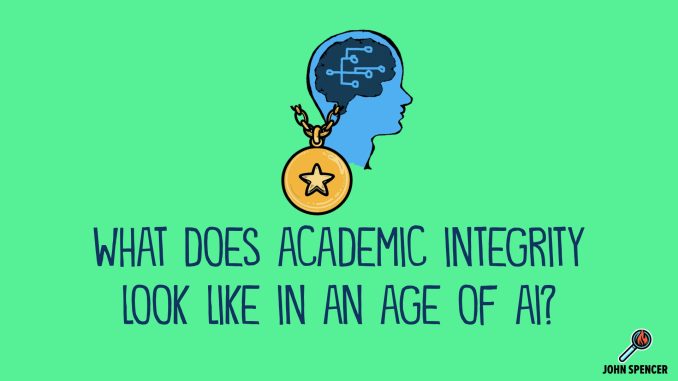
Academic honesty forms the bedrock of any credible educational institution and, by extension, the intellectual integrity of future professionals. It’s more than just a set of rules against cheating; it’s a fundamental commitment to ethical conduct, intellectual rigor, and the genuine pursuit of knowledge. In an era where information is readily accessible and digital tools can both aid and abet misconduct, promoting academic honesty has become a multifaceted challenge, demanding proactive strategies that extend beyond punitive measures. Cultivating a culture of integrity requires a holistic approach, encompassing clear communication, pedagogical design, and the fostering of an environment where ethical behavior is both expected and intrinsically valued.
The first crucial step in promoting academic honesty is to clearly define and consistently communicate what it entails. Many instances of academic misconduct, particularly among younger learners, stem not from malicious intent but from a genuine lack of understanding regarding what constitutes plagiarism, proper citation, or acceptable collaboration. Educators must explicitly teach these concepts, providing concrete examples and demonstrating best practices. For instance, instead of just stating “don’t plagiarize,” teachers should conduct workshops on paraphrasing, summarizing, and direct quoting, coupled with hands-on practice in various citation styles. Clearly articulated honor codes, discussed at the beginning of each academic term, serve as essential guideposts, ensuring students understand the institution’s expectations and the consequences of violating them. This proactive education demystifies the complexities of academic integrity and sets a foundation of shared understanding.
Beyond clear communication, pedagogical design plays a pivotal role in minimizing opportunities and incentives for academic dishonesty. Assessments that primarily rely on rote memorization or easily searchable answers are inherently more vulnerable to cheating. Instead, educators should design assignments that require higher-order thinking skills, critical analysis, creativity, and personal reflection. For example, instead of a multiple-choice exam on historical facts, a history professor might assign an essay that requires students to analyze primary sources from different perspectives and construct an original argument. Similarly, instead of a standard book report, an English teacher could ask students to create a multimedia presentation that interprets themes from the text and connects them to contemporary issues. When assignments demand genuine thought and unique synthesis, it becomes far more difficult, and less appealing, to simply copy or plagiarize.
Furthermore, fostering a supportive and low-pressure learning environment can significantly reduce the temptation for dishonesty. Students often resort to cheating when they feel overwhelmed, inadequately prepared, or under immense pressure to achieve high grades. Educators can mitigate this by providing ample resources, offering clear feedback throughout the learning process, and emphasizing learning and growth over grades alone. This includes making themselves accessible for questions, offering extra help sessions, or providing opportunities for revision and resubmission. When students feel supported and confident in their ability to succeed through legitimate means, the perceived need to cheat diminishes. For example, a math teacher who regularly offers review sessions and optional practice problems, and grades based on mastery rather than a single high-stakes test, creates an environment where students feel less compelled to resort to dishonest tactics out of desperation.
Technology, while often cited as a challenge, can also be a powerful ally in promoting academic honesty. Plagiarism detection software, for instance, can help identify instances of unoriginal work, acting as both a deterrent and an educational tool. However, it’s crucial to use these tools judiciously, focusing on their instructional potential rather than merely their punitive function. Beyond detection, technology can also enable more secure assessment methods, such as proctored online exams or adaptive testing platforms that randomize questions. More importantly, technology can facilitate collaborative learning environments where students build knowledge together in transparent ways, reducing the individual isolation that can sometimes foster dishonesty. For example, using shared online documents with version histories allows instructors to see how students contributed to a group project.
Ultimately, promoting academic honesty is about cultivating a culture of integrity, where ethical behavior is not merely enforced but intrinsically valued by the entire academic community. This requires leading by example, with faculty and administration consistently upholding the highest standards of academic integrity in their own work and interactions. It also involves creating opportunities for open dialogue about the importance of honesty, its role in personal and professional development, and the long-term consequences of intellectual shortcuts. When students understand that academic integrity is essential for their own learning, for the credibility of their future credentials, and for the advancement of knowledge itself, they are far more likely to embrace it as a core value.
In conclusion, addressing academic dishonesty goes far beyond simply catching and punishing offenders. It necessitates a proactive, multi-pronged approach rooted in clear communication of expectations, thoughtful pedagogical design that encourages authentic learning, the creation of a supportive learning environment, and the strategic use of technology. By consistently nurturing a culture where honesty is celebrated, integrity is understood, and genuine intellectual effort is rewarded, educational institutions can empower students to become not just knowledgeable scholars, but also ethical individuals prepared to contribute responsibly to the broader world.